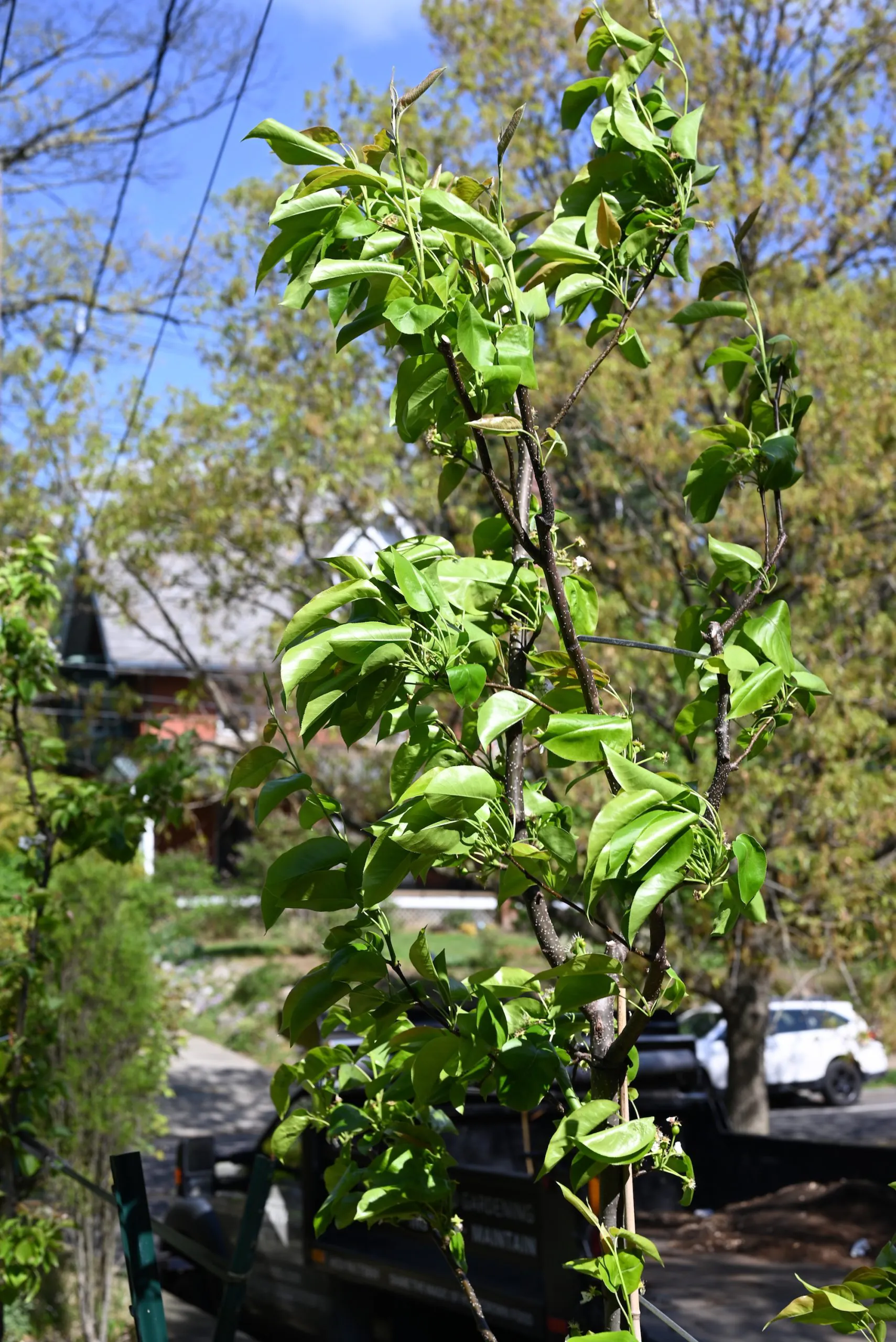Get The Most Out of Your Pears from Backyard Eats
Harvesting Pears
When It’s Ready
- Check for mature color: Fruit should have developed their characteristic color. Pears should have a consistent color throughout.
- Assess fruit firmness: Gently press near the stem end to check if the fruit gives slightly without being too soft.
- Look for ease of separation: Twist the fruit gently, and if it easily detaches from the branch, it is ready for harvest.
- Harvest in the morning: Harvesting in cooler temperatures helps preserve the fruit’s quality.
- Late summer to fall, depending on the variety (August – October)
When It’s Too Late
- Overripe fruits become soft, mealy, and may start to decay.
- Regularly check your trees to ensure you harvest the fruits at their peak ripeness.
How To
- Hold the fruit firmly and twist it upwards or give it a gentle upward tug to detach it from the tree.
- Place the harvested fruits carefully in a container or basket, being mindful not to bruise or drop them.
- Handle the fruits with care to prevent any damage to the skin or flesh.
About Pears
Pears are trees that can grow 10-20 feet tall for semi-dwarf varieties. They require full sun and pruning to thrive, and a pollinating pair to reproduce.
Flowering/Fruiting Tendencies
Semi-dwarf pear trees offer home gardeners a bounty of fragrant blossoms in spring, followed by a prolific yield of sweet, juicy pears. Their moderate to high fruiting tendencies ensure a reliable harvest, while their compact size makes them an excellent choice for smaller garden spaces.
Design Notes
These trees are tailored for home landscapes, boasting a compact form that suits urban gardens or cozy backyard orchards. With their graceful branching structure and lush foliage, semi-dwarf pear trees add visual appeal to any garden design, providing both beauty and functionality in limited spaces.
Care Notes
For semi-dwarf pear trees in home gardens, focus on regular pruning for an open canopy, ensuring sunlight penetration and airflow. Provide consistent watering and organic fertilizers for healthy growth, while monitoring and managing pests using natural methods to sustain a fruitful harvest.
Newly planted perennials require some additional care to help establish and support the plants as they grow. Water newly planted perennials deeply at the root 2-3 times a week during the first growing season. Apply compost and wood chip mulch in the late winter/early spring.
Storing Pears
Fresh Storage: Keep fresh pears in a cool, dark place, such as a pantry or cellar, away from direct sunlight, for up to a month.
Long-Term Storage: Wrap each fruit individually in newspaper or place them in a ventilated container in a cool, humid environment, ideally around 32-40°F (0-4°C), such as a root cellar or refrigerator, for up to several months.

Cooking With Pears
- Poached Pears: Simmer peeled and cored pears in a mixture of water, sugar, and spices like cinnamon, cloves, or vanilla. The gentle poaching process results in tender and flavorful pears that can be enjoyed as a dessert on their own or served with ice cream or yogurt.
- Pear Tart or Galette: Arrange sliced pears on a pre-baked tart shell or galette dough, then brush them with apricot jam for a glossy finish. Bake until the pears are tender and the crust is golden.
- Pear Salad: Combine sliced pears with mixed greens, toasted nuts, crumbled cheese (such as goat cheese or Gorgonzola), and a light vinaigrette dressing. The sweet and juicy pears add a delightful element to the salad.
- Pear Sauce: Cook peeled and diced pears with sugar, cinnamon, and a bit of water until they soften and break down. The resulting pear sauce can be enjoyed on its own, used as a topping for pancakes or oatmeal, or used as a filling for desserts.
- Pear and Cheese Pairings: Serve fresh pears alongside a selection of cheeses like Brie, Camembert, or blue cheese. The combination of the sweet pears and creamy, tangy cheeses creates a delicious flavor contrast.
- Pear Crumble: Mix sliced pears with sugar and a squeeze of lemon juice, then top them with a crumble mixture made from oats, flour, butter, and brown sugar. Bake until the pears are tender and the topping is golden and crisp.




